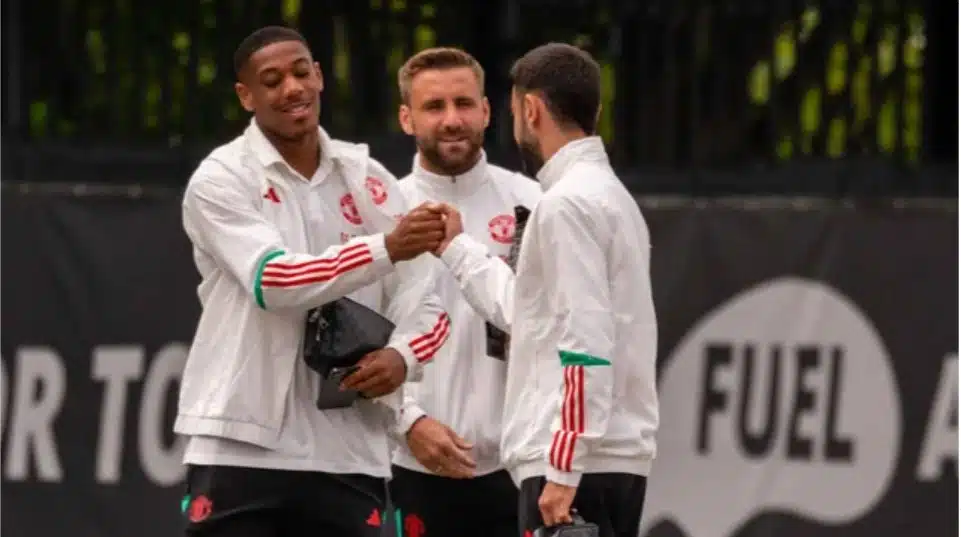In the modern game, where transfers dominate headlines and players often move clubs for bigger wages or brighter lights, loyalty has become a rare commodity. Yet longevity at a single club is one of the most powerful legacies a footballer can leave. It symbolizes not just consistency but devotion—qualities that fans cherish as much as goals or trophies.
For Manchester United, one of the most storied clubs in world football, loyalty is woven into its DNA. The longest-serving Manchester United players embody the spirit of Old Trafford, carrying the club through decades of triumphs and challenges. This journey begins with early icons from the club’s formative years.
The Value of Loyalty in Football
Staying at one club for a decade or more requires resilience, adaptability, and an unshakable bond with the fans. While talent may define a career, loyalty elevates it into legend.
At United, long-serving players are revered because they represent continuity in a constantly evolving sport. Their presence assures fans that some traditions never change, even as managers, teammates, and rivals come and go.
This principle of loyalty can be traced back to the early 20th century, where several United stalwarts established the foundation for future legends.
Early Era Players Who Served the Club for Decades
In United’s early history, players like Bill Foulkes and Jack Rowley built careers spanning well over a decade.
- Bill Foulkes (1952–1970): Survived the Munich Air Disaster and went on to make over 600 appearances, serving as a defensive rock for nearly two decades.
- Jack Rowley (1937–1955): Nicknamed the “Gunner,” Rowley scored over 200 goals during his long spell, playing through wartime disruptions and into Busby’s rebuilding years.
Sequentially, these figures linked pre-war United to the post-war glory, proving that longevity was as vital as brilliance. Their careers led seamlessly into Sir Bobby Charlton’s era of dedication.
Sir Bobby Charlton – Decades of Dedication
Sir Bobby Charlton epitomizes loyalty. Joining as a youth in the 1950s, he played for Manchester United until 1973, amassing 758 appearances and scoring 249 goals.
As a Munich survivor, Charlton’s service extended beyond footballing excellence—it symbolized resilience, leadership, and hope. His loyalty through tragedy and triumph ensured that he became one of the most respected figures not just at United but in world football.
Charlton’s story reminds us why long service is celebrated: it is about being a custodian of history while shaping the future. From here, the baton would pass to modern icons like Ryan Giggs.
Ryan Giggs – United’s Eternal Winger
If Charlton was the heart of United in the 20th century, Ryan Giggs became its soul in the modern era. Giggs joined the academy in 1987, made his first-team debut in 1991, and retired in 2014, spanning an incredible 24 years in the senior squad.
- Appearances: 963 (a club record)
- Goals: 168
- Trophies: 13 Premier League titles, 2 Champions Leagues, among countless others
Giggs holds the statistical record as United’s longest-serving player. His ability to adapt—from a flying winger in the 1990s to a composed central midfielder later—demonstrated why longevity requires evolution as much as talent.
Giggs’ Role in the Ferguson Era
Giggs’ presence was critical during Sir Alex Ferguson’s dynasty. His leadership, professionalism, and clutch performances in big games symbolized the Ferguson mentality of resilience and consistency.
His loyalty also connected him to fellow Class of ’92 members, ensuring that United’s dominance in the 1990s and 2000s was built not just on talent but on enduring dedication.
Paul Scholes – The Midfield Maestro
Another emblem of loyalty was Paul Scholes, who served United from 1993 to 2013 (with a brief retirement and comeback in 2012). Known for his passing vision, shooting, and intelligence, Scholes became a midfield legend.
- Appearances: 718
- Goals: 155
While Scholes was less flamboyant than Beckham or Giggs, his quiet loyalty resonated deeply with fans. Balanced sentiment shows that his devotion was not about spectacle but about being a consistent, reliable heartbeat of the team for two decades.
Gary Neville – From Youth to Captaincy
Gary Neville joined the academy as a boy and retired in 2011 having spent his entire professional career at United.
- Appearances: 602
- Role: Right-back, captain, and leader of the Class of ’92
Neville exemplified consistency and professionalism. His career-long service mirrored Giggs and Scholes, creating a core of loyal players who defined Ferguson’s era. Evidence repeating itself, Neville’s consistency highlights how loyalty builds club stability and identity.
Modern Examples of Loyalty – De Gea and Others
In modern football, loyalty is harder to find. Yet, David de Gea stands out as a player who stayed at United for over a decade (2011–2023). Despite strong links to Real Madrid, De Gea remained and became United’s record appearance holder for a goalkeeper.
Other examples include Michael Carrick (2006–2018), who quietly anchored the midfield for 12 years, and Antonio Valencia (2009–2019), who served as both winger and full-back with distinction.
Compared with earlier eras, modern loyalty faces challenges: higher wages, global transfer markets, and changing managerial strategies. Yet players like De Gea prove that commitment is still possible in the modern age.
Comparing Longevity with Rival Clubs
When compared with rivals, United’s tradition of loyalty stands tall.
- Liverpool: Steven Gerrard served for 17 years, but few others matched his tenure.
- Chelsea: John Terry embodied loyalty but in a club known for frequent changes.
- Barcelona: Icons like Xavi and Messi demonstrated similar long-term devotion.
The comparison highlights that while many clubs have long-serving legends, United’s identity is uniquely shaped by multiple players across generations dedicating decades of their careers to the club.
Cultural Impact of Long-Serving Manchester United Players
Long-serving players are more than athletes—they are symbols of cultural identity. Giggs and Scholes represented continuity during Ferguson’s reign, while Charlton symbolized resilience after Munich.
For fans, loyalty is a cultural anchor. These players embody what supporters value most: passion, perseverance, and pride in the badge.
The cultural significance of these figures extends into modern fan communities. Many supporters explore football heritage and identity through digital platforms like ทางเข้ายูฟ่า 168, where stories of loyalty are celebrated alongside broader engagement with the game.
Legacy of Manchester United’s Longest-Serving Players
From Charlton’s post-war resilience to Giggs’ unmatched appearances, Scholes’ quiet brilliance, Neville’s captaincy, and De Gea’s modern loyalty, the longest-serving Manchester United players define the club’s legacy.
They represent the threads of continuity that connect different eras, ensuring that the spirit of Manchester United endures across generations.
For fans, celebrating this loyalty extends beyond football itself. Many engage in broader cultural experiences, from following history to enjoying lifestyle communities like เว็บบาคาร่า, where passion for sport connects with entertainment.
In conclusion, loyalty is football’s hidden trophy, and United’s longest-serving players are its champions. They are not only the backbone of the club’s success but also timeless symbols of identity, proving that true greatness is measured not only in goals or titles but also in years of unwavering devotion.
Disclaimer
Kaku Press does not promote or support this kinds of games, This content is information purpoes only. Play or visit at your own risk.



